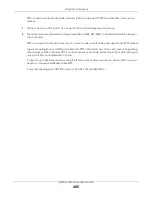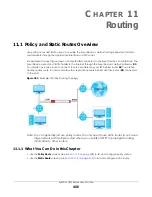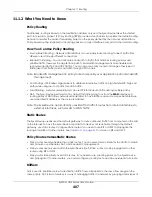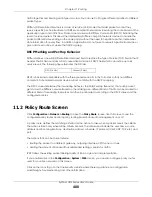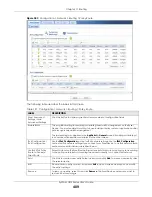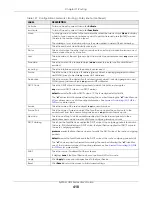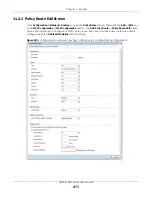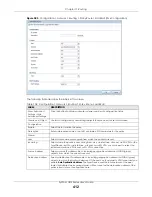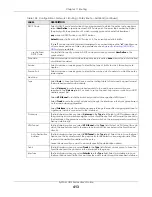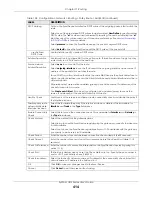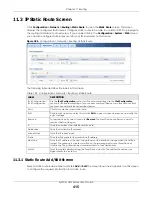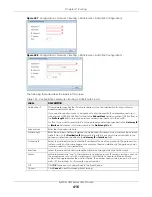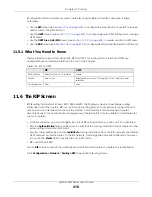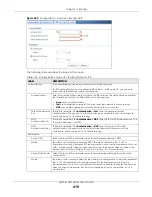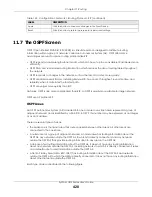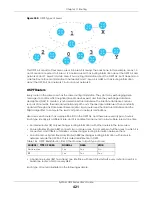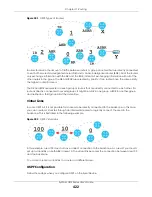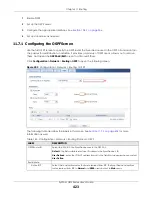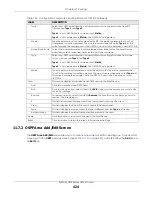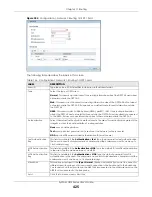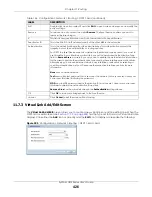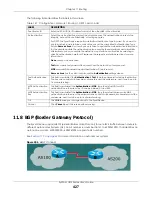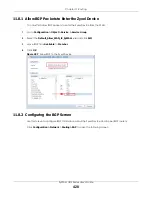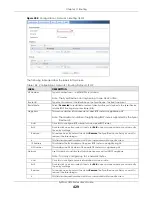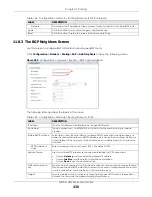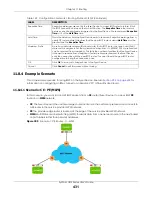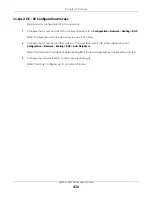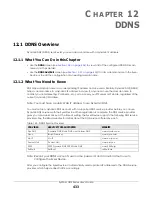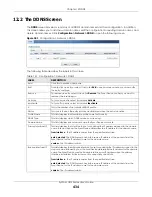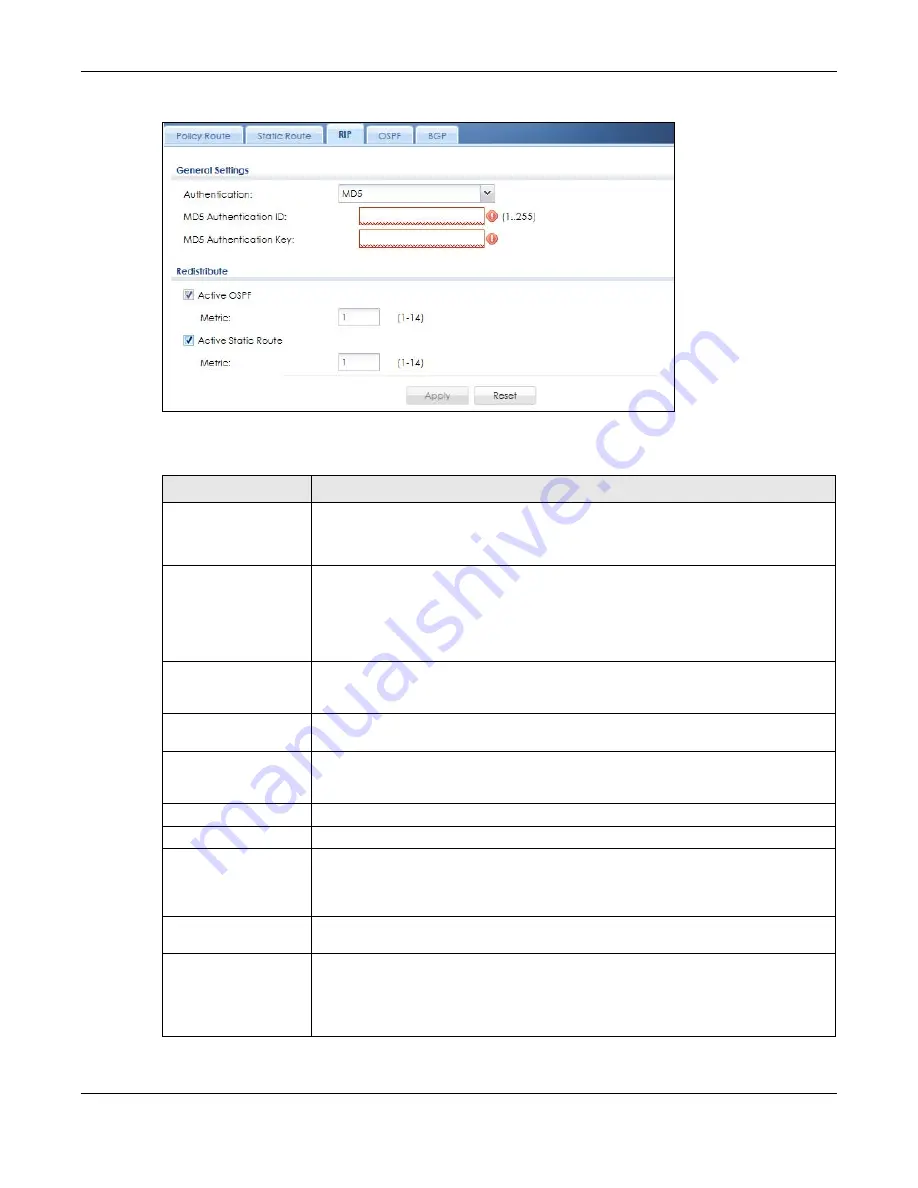
Chapter 11 Routing
ZyWALL USG Series User’s Guide
419
Figure 289
Configuration > Network > Routing > RIP
The following table describes the labels in this screen.
Table 143 Configuration > Network > Routing Protocol > RIP
LABEL
DESCRIPTION
Authentication
The transmitting and receiving routers must have the same key.
For RIP, authentication is not available in RIP version 1. In RIP version 2, you can only
select one authentication type for all interfaces.
Authentication
Select the authentication method used in the RIP network. This authentication protects
the integrity, but not the confidentiality, of routing updates.
•
None
uses no authentication.
•
Text
uses a plain text password that is sent over the network (not very secure).
•
MD5
uses an MD5 password and authentication ID (most secure).
Text Authentication
Key
This field is available if the
Authentication
is
Text
. Type the password for text
authentication. The key can consist of alphanumeric characters and the underscore,
and it can be up to 16 characters long.
MD5
Authentication ID
This field is available if the
Authentication
is
MD5
. Type the ID for MD5 authentication. The
ID can be between 1 and 255.
MD5
Authentication Key
This field is available if the
Authentication
is
MD5
. Type the password for MD5
authentication. The password can consist of alphanumeric characters and the
underscore, and it can be up to 16 characters long.
Redistribute
Active OSPF
Select this to use RIP to advertise routes that were learned through OSPF.
Metric
Type the cost for routes provided by OSPF. The metric represents the “cost” of
transmission for routing purposes. RIP routing uses hop count as the measurement of cost,
with 1 usually used for directly connected networks. The number does not have to be
precise, but it must be between 0 and 16. In practice, 2 or 3 is usually used.
Active Static Route
Select this to use RIP to advertise routes that were learned through the static route
configuration.
Metric
Type the cost for routes provided by the static route configuration. The metric represents
the “cost” of transmission for routing purposes. RIP routing uses hop count as the
measurement of cost, with 1 usually used for directly connected networks. The number
does not have to be precise, but it must be between 0 and 16. In practice, 2 or 3 is
usually used.
Summary of Contents for USG110
Page 27: ...27 PART I User s Guide ...
Page 195: ...195 PART II Technical Reference ...
Page 309: ...Chapter 10 Interfaces ZyWALL USG Series User s Guide 309 ...
Page 313: ...Chapter 10 Interfaces ZyWALL USG Series User s Guide 313 ...
Page 358: ...Chapter 10 Interfaces ZyWALL USG Series User s Guide 358 ...
Page 373: ...Chapter 10 Interfaces ZyWALL USG Series User s Guide 373 ...

